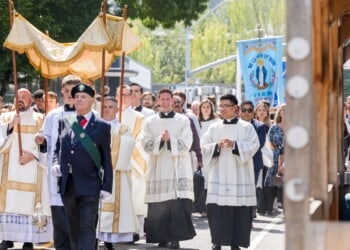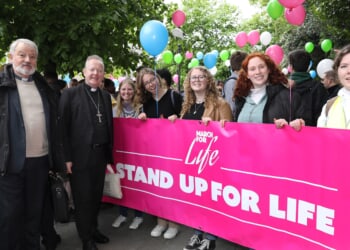
The Mütter Museum in Philadelphia has uncovered a decades-old mystery involving two unidentified infant skulls found during a routine audit of its human remains collection last November, as reported by The Daily Mail.
Museum staff made the discovery while cataloging materials from its library storage area, which houses over 6,000 anatomical specimens.
Notes found with the skulls pointed to a chilling case from the early 1980s, in which an elderly Pennsylvania woman, Stella Williamson, admitted on her deathbed to hiding the bodies of five infants in a trunk in her attic.
Kindly one-legged spinster who rocked on her porch all day kept terrible secret hidden in trunk in her attic https://t.co/37NE2ql8QP
— Daily Mail US (@Daily_MailUS) July 28, 2025
Trump’s Sovereign Wealth Fund: What Could It Mean For Your Money?
The case received national attention at the time but faded from public memory over the decades.
Williamson, who passed away in 1980, lived in Gallitzin, Pennsylvania. She was described in newspaper accounts as a quiet, religious woman who had lost a leg to diabetes and was known in her neighborhood for spending time on her porch, interacting with children.
This Could Be the Most Important Video Gun Owners Watch All Year
She lived alone, never married, and was referred to in local reports as a “spinster.”
Her secret came to light after authorities discovered a note following her death. “I want to make things right if anything should happen to me,” the note read.
“In the attic in an old trunk you will find babies I had to [redacted] 30 years [ago] or more.” The note included spelling errors and incomplete statements, but its message was clear. Williamson confessed to concealing the bodies and asked for forgiveness.
She said the unnamed father bore no responsibility and implied she had remained single because of the guilt she carried.
Following her death, authorities recovered five decomposed infant bodies from her attic. At least three were determined to have been murdered, and forensic examination at the time revealed evidence of possible strangulation.
Philadelphia’s Mütter Museum recently identified two infant skulls in its collection as belonging to children of Stella Williamson, a Gallitzin, Pennsylvania, resident who died in 1980. Williamson’s attic held the mummified remains of five infants—believed to be her children.… pic.twitter.com/HzlZigBDvf
— Criminally Obsessed (@CRMNLLYObsessed) July 10, 2025
The children were estimated to have died between 1927 and 1933. Four were believed to be only weeks old, while one had likely lived for nearly a year.
The remains were transported to Philadelphia for further analysis. However, due to advanced decomposition and limitations of forensic technology at the time, no definitive conclusions were reached, and the case remained unsolved.
The remains were buried in sealed coffins in 1980, but records indicate those coffins were never opened again—raising questions about how two of the skulls wound up in the museum’s collection.
The Philadelphia Inquirer reported that the skulls may have been transferred by Dr. Halbert Fillinger, a former forensic pathologist, but no documentation has been found confirming how or when the skulls were added to the museum’s archive.
They were neither displayed nor cataloged for research, and museum officials believe they remained wrapped in old newspapers for decades before being rediscovered.
Officials say the discovery sheds new light on the long-dormant case but offers little resolution. “It’s going to remain a mystery, unfortunately,” former Cambria County coroner John Barron stated in 1980. “There are some things we’d all like to know, but they’re buried with the people.”
Update:
Cambria County officials have revealed that in June 1999, renowned forensic pathologist Dr. Halbert “Homicide Hal” Fillinger—who was never authorized—donated two mummified infant skulls from the 1980 Stella Williamson case (better known as the Gallitzin baby murders) to… pic.twitter.com/9diYUlmmVf
— Criminally Obsessed (@CRMNLLYObsessed) July 23, 2025
The opinions expressed by contributors and/or content partners are their own and do not necessarily reflect the views of LifeZette. Contact us for guidelines on submitting your own commentary.

![Philadelphia Museum Uncovers Skulls Linked to Chilling Infant Death Case from 1980 [WATCH]](https://www.right2024.com/wp-content/uploads/2025/07/Philadelphia-Museum-Uncovers-Skulls-Linked-to-Chilling-Infant-Death-Case-750x375.jpg)

![Former Bravo Star Charged After Violent Assault Using a Rock-Filled Sock in Tennessee Walmart [WATCH]](https://www.right2024.com/wp-content/uploads/2025/07/Former-Bravo-Star-Charged-After-Violent-Assault-Using-a-Rock-Filled-350x250.jpg)



![Karoline Leavitt Levels CNN's Kaitlan Collins and Other Legacy Media Reporters [WATCH]](https://www.right2024.com/wp-content/uploads/2025/07/Karoline-Leavitt-Levels-CNNs-Kaitlan-Collins-and-Other-Legacy-Media-350x250.jpg)
![Man Arrested After Screaming at Senators During Big Beautiful Bill Debate [WATCH]](https://www.right2024.com/wp-content/uploads/2025/06/Man-Arrested-After-Screaming-at-Senators-During-Big-Beautiful-Bill-350x250.jpg)

![Illegal Alien Walked Free After Decapitating Woman, Abusing Corpse for Weeks [WATCH]](https://www.right2024.com/wp-content/uploads/2025/07/1753013138_Illegal-Alien-Walked-Free-After-Decapitating-Woman-Abusing-Corpse-for-350x250.jpg)






